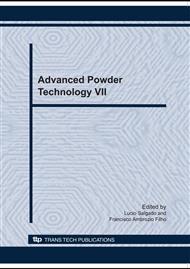p.413
p.419
p.426
p.432
p.437
p.443
p.448
p.454
p.463
Production of Milk of Lime for Sugar Cane Industry: Study of Factors Influencing Lime Slaking
Abstract:
Milk of lime is used in the sugar industry for pH correction and as auxiliary of flocculation in bleaching of the sugar solution. Despite its intense use in sugar cane industry, the milk of lime is rudimentarily produced. The milk of lime badly produced adds great quantities of incrustation in process pipelines and equipments and increases its specific consumption in the process. To mitigate these undesirable effects it is necessary to prepare a milk of lime with appropriated chemical, physical and morphological characteristics. In this paper, several different suspensions of milk of lime were tested in bleaching of the sugar solution. These suspensions were characterized chemical, physical and morphologically and the results were correlated with the performance of the bleaching of the sugar solution. Experimental results showed chemical composition, reactivity, particle size, surface area and slaking process of quicklime affect greatly the quality of the milk of lime.
Info:
Periodical:
Pages:
437-442
Citation:
Online since:
October 2010
Keywords:
Price:
Сopyright:
© 2010 Trans Tech Publications Ltd. All Rights Reserved
Share:
Citation:


